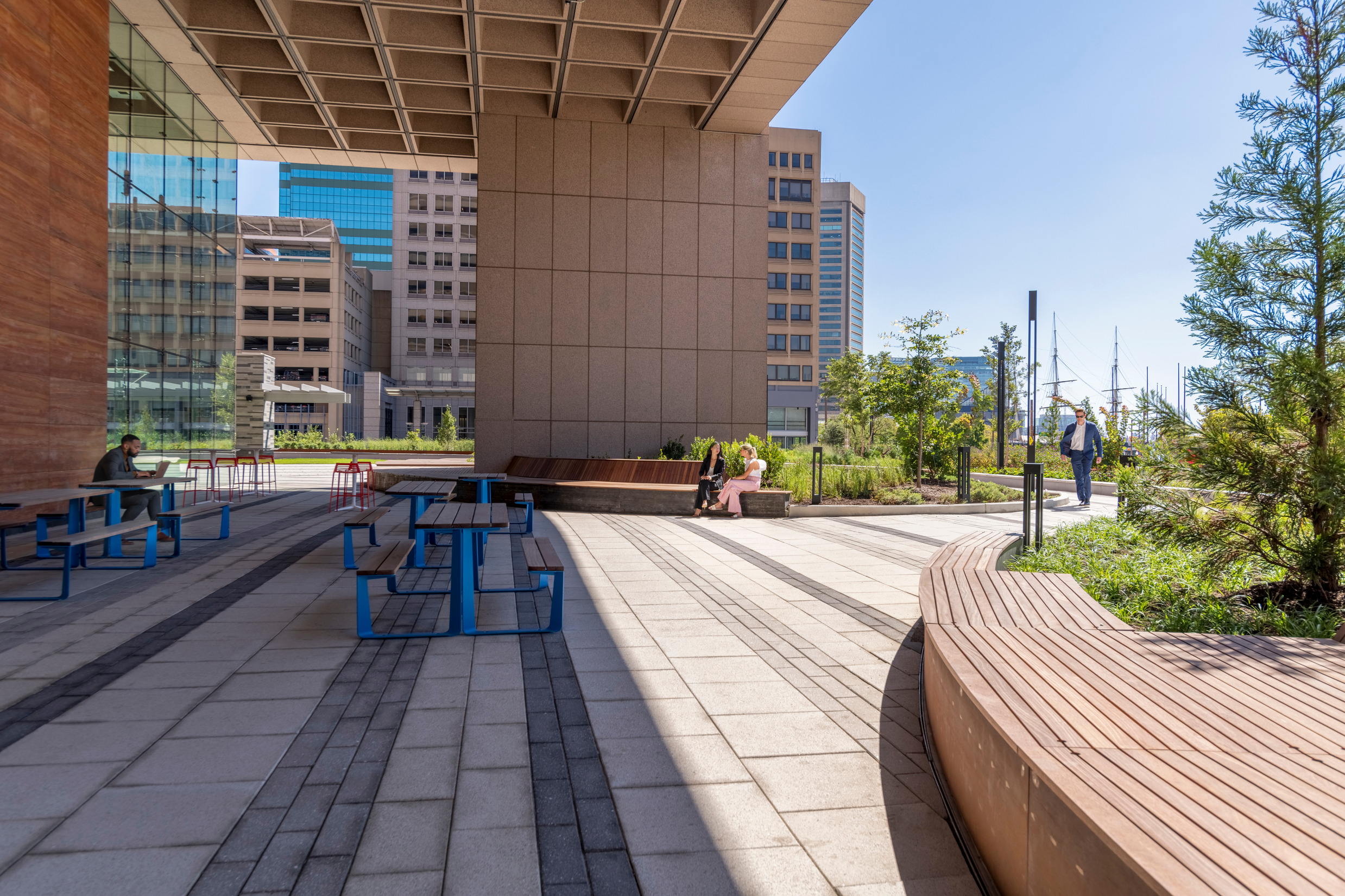The desire to entice workers back to offices is compelling commercial property owners and their tenants to rethink and renovate workspaces. However, the path to creating truly attractive offices isn’t entirely clear. Despite workers’ widespread desire for a greater variety of workspaces and amenities, design, development, and leasing professionals say that property owners and tenants need to complete purposeful, customized renovations in order to succeed.
“What is the culture of the building that you are trying to fill?” said Kelly Ennis, Founding and Managing Principal at The Verve Partnership. “Amenities really need to be intentional. Space has to be properly programmed for the people and purpose that buildings and employers are trying to attract. You can’t just randomly throw a coworking space, a conference center, a gym, or a coffee shop into a building and expect people to come if there is no intention behind that renovation.”
Ennis pointed to the examples of The Howard Hughes Corporation buildings in downtown Columbia and the newly developed buildings on the Baltimore Peninsula as properties that have “curated amenities with the utmost intension to the kinds of tenants they are trying to attract.”
When working on office redesigns, Ennis urges her clients to focus on three things – people, purpose, and place – in order to determine what workspace will be truly attractive and successful. Clients, she said, need to think carefully about how to convey the brand of the employer or building. They also need to develop an “interior placemaking strategy” to create a design that is attractive, functional, and supports collaboration and community. The Verve Partnership often conducts visioning sessions, interviews, and surveys with a range of stakeholders in a renovation to work through those issues.
Corporate Office Properties Trust, which has completed extensive renovations of office properties in Columbia and downtown Baltimore in recent years, conducts “an iterative process” to plan redesigns, said John Hermann, Vice President, Asset Management + Leasing at COPT.
“When we identify a property with a need, we will bring a lot of stakeholders together from lots of different disciplines to discuss design,” Hermann said. “We will typically bring in three or four different design firms and ask them to engage in a design charette. We typically award the project to whichever firm had the best ideas or the most compelling presentation… You learn a lot along the way. The team matters. Having the right voices in the room from all disciplines is really important.”
The success of the process, he added, has proven out in lease rates in redesigned properties, including 100 Light Street and the three-building Wayline campus.

